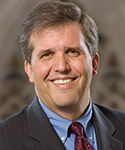Could it be that underlying one of our most celebrated Supreme Court decisions is a network of relationships and practices fostered by an educational institution? That crucial determinants of a case decided in 1954 were actually established in the early 1930s, with Howard University’s School of Law at the heart of those developments?
Brown v. Board of Education is justly celebrated as one of the most important Supreme Court decisions in American history. The decision, which set a path for desegregating American schools, overturned Plessy v. Ferguson’s 1896 decision that allowed for “separate but equal” facilities for African-American and Anglo-American citizens.
Thurgood Marshall, later the first African-American appointed as a justice of the United States Supreme Court, was the lead attorney for the plaintiffs. He was a compelling orator and sophisticated legal thinker, and is justly credited for his leadership of the case.
Yet significant credit should also be given to Marshall’s mentor, Charles Hamilton Houston. Houston deserves credit for his direct mentorship of Marshall, but his impact goes far beyond that.
Marshall’s brilliance is inextricably linked to the network of relationships and practices he participated in during the quarter century between his enrollment in Howard University’s School of Law in 1930 and the Supreme Court decision in 1954. That network is Houston’s legacy and a tribute to his visionary leadership.
Houston was a graduate of Amherst College and Harvard Law School. He was practicing law in Washington, D.C., in 1929 when he was invited to serve as vice dean and, a year later, dean of Howard University’s School of Law. He quickly discerned what was at stake: if African-Americans wanted to achieve equal rights under the law, African-American lawyers needed to be superbly prepared, ready to effect culture change beyond winning cases.
Houston began a multipronged strategy to ensure effective formation of African-American lawyers. He pruned the Howard Law faculty, focused on full-time students and shut down the night school, invited the best legal minds as guest lecturers, and created expectations for both faculty and students to have bold ambitions and rigorous standards. Biographer Rawn James Jr. sums up Houston’s leadership: “He enacted sweeping reforms that transformed Howard Law School from what the city’s wealthiest black residents called ‘a dummy’s retreat’ into an institution whose uncompromising rigor and singularity of purpose drew comparisons to the military academy at West Point.”
Houston knew that, like West Point, Howard Law had the lives and deaths of human beings at stake. And he recognized that, like West Point, Howard Law was doing far more than simply providing education for a particular profession: it was building a cadre of leaders for a vision of a transformed society, leaders who also were trained in skills to transform that vision into effective and strategic practice.
How did Houston do it? He worked closely with the NAACP on real cases, in some instances taking the lead in a case himself. He developed strong connections with lawyers and other African-American leaders up and down the East Coast, cultivating a network of relationships and practices that built remarkable capabilities in Howard Law students as well as other leaders in the broader community.
In the early 1930s, Howard Law School became the keystone of a broad ecosystem of people and organizations working to effect change. Richard Kluger describes the impact in “Simple Justice: The History of Brown v. Board of Education and Black America’s Struggle for Equality”: “Howard Law School became a living laboratory where civil-rights law was invented by teamwork. There were probably never more than fifty or sixty students enrolled at any one time, and that was all right with Houston, who was not after numbers but intensive training of young minds that shared his dream. They all worked on real briefs for real cases and accompanied Houston and other faculty members to court to learn procedure and tactics.”
Thurgood Marshall was Houston’s prize student. He was an apprentice to Houston, and even more importantly, he was the beneficiary of an opportunity to engage in action-oriented learning as a part of the broader ecosystem. Marshall developed significant capacities while at Howard, and then remained in close touch with the school and with Houston after he graduated. Through the ecosystem fostered by Howard Law School, Marshall developed the mindset, skills and character that he would continue to nurture over the next two decades and beyond.
Marshall was a student at Howard Law for a mere three years; Houston was there as dean for only six. But the ecosystem that was created during that time became an incubator for dramatic changes in American culture. Kluger’s summary judgment of Houston’s leadership at Howard Law School is instructive: “In the six years he stayed, he both built a creditable law school and injected enormous momentum into a social movement that has not yet ended.”
Houston knew how to draw on the traditions of Howard University even as he incubated innovative approaches. He combined a demanding rigor with the skills of a diplomat, masterfully attending to both the local context and the possibilities of wider and more transformational impact.
Too often, we underplay the keystone significance of institutions such as Howard Law -- institutions that see themselves as organisms in an ecosystem, organisms of relationships (both personal and organizational) and practices that effect significant culture change.
Part of Houston’s genius was discovering that his leadership at Howard Law was more akin to being a gifted gardener than simply a technician or a politician. He aimed for culture change, and preparing lawyers and winning cases were components of that broader vision.
Houston and Marshall accomplished some change in the short term, during the 1930s. But their greatest impact, and the most significant culture change, came more than two decades later, and beyond.
Institutions matter more than we suspect for long-term culture change, especially when they are blessed with a clear sense of mission, visionary leadership, and a commitment to cultivating intrinsic relationships and practices as a part of a wider ecosystem. Can we take such a long view -- and then think and live and lead toward that now?







